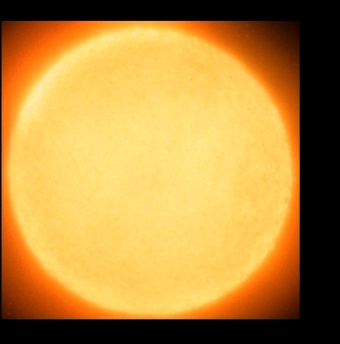|
 A yellow dwarf is a
classification of star which is undergoing hydrogen-helium conversion.
Our sun was a well-known yellow dwarf star. A yellow dwarf is a
classification of star which is undergoing hydrogen-helium conversion.
Our sun was a well-known yellow dwarf star.
In 2356, Magnus and Erin Hansen crashlanded their ship,
the USS Raven on an M-class moon orbiting the fifth planet of a yellow
dwarf located in B'omar space. (VOY: "The Raven"). On stardate 49485.2
the USS Voyager vistited Hemikek IV, a planet in the Hemikek yellow
dwarf star system (VOY: "Investigations"). The planet dubbed "New
Earth" by the crew of the USS Voyager orbits a yellow dwarf as the
third of seven planets. (VOY: "Resolutions"). Similarly, the planet
Mislen is located within a yellow dwarf star system. (VOY: "The Swarm").
A yellow dwarf - more commonly called a G V Star - is
small (about 0.8 to 1.0 solar masses) and has a surface temperature of
between 5,300 and 6,000 K. Like other main-sequence stars, a G V star
is in the process of converting hydrogen to helium in its core by means
of nuclear fusion. Our Sun is the most well-known (and most visible)
example of a G V star. Each second, it fuses approximately 600 million
tons of hydrogen to helium, converting about 4 million tons of matter
to energy. Other G V stars include Alpha Centauri A, Tau Ceti, and 51
Pegasi.
The term yellow dwarf is a misnomer, as G stars actually
range in color from white, for early types like the Sun, to only
slightly yellow for the later types. Our own Sun is in fact white. The
misconception that it is yellow stems from contrast with the blue sky
(which makes it appear yellow) and the reddening of the Sun close to
the horizon due to Rayleigh scattering by the atmosphere.
A G V star will fuse hydrogen for, very approximately,
10 billion years, until it is exhausted at the center of the star. When
this happens, the star expands to many times its previous size and
becomes a red giant, such as Aldebaran (Alpha Tauri.)[9] Eventually the
red giant sheds its outer layers of gas, which become a planetary
nebula, while the core cools and contracts into a small, dense white
dwarf.
|
|
